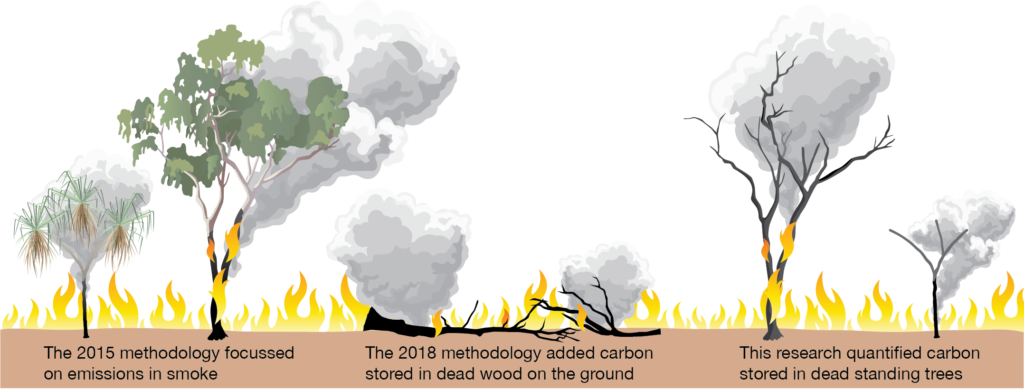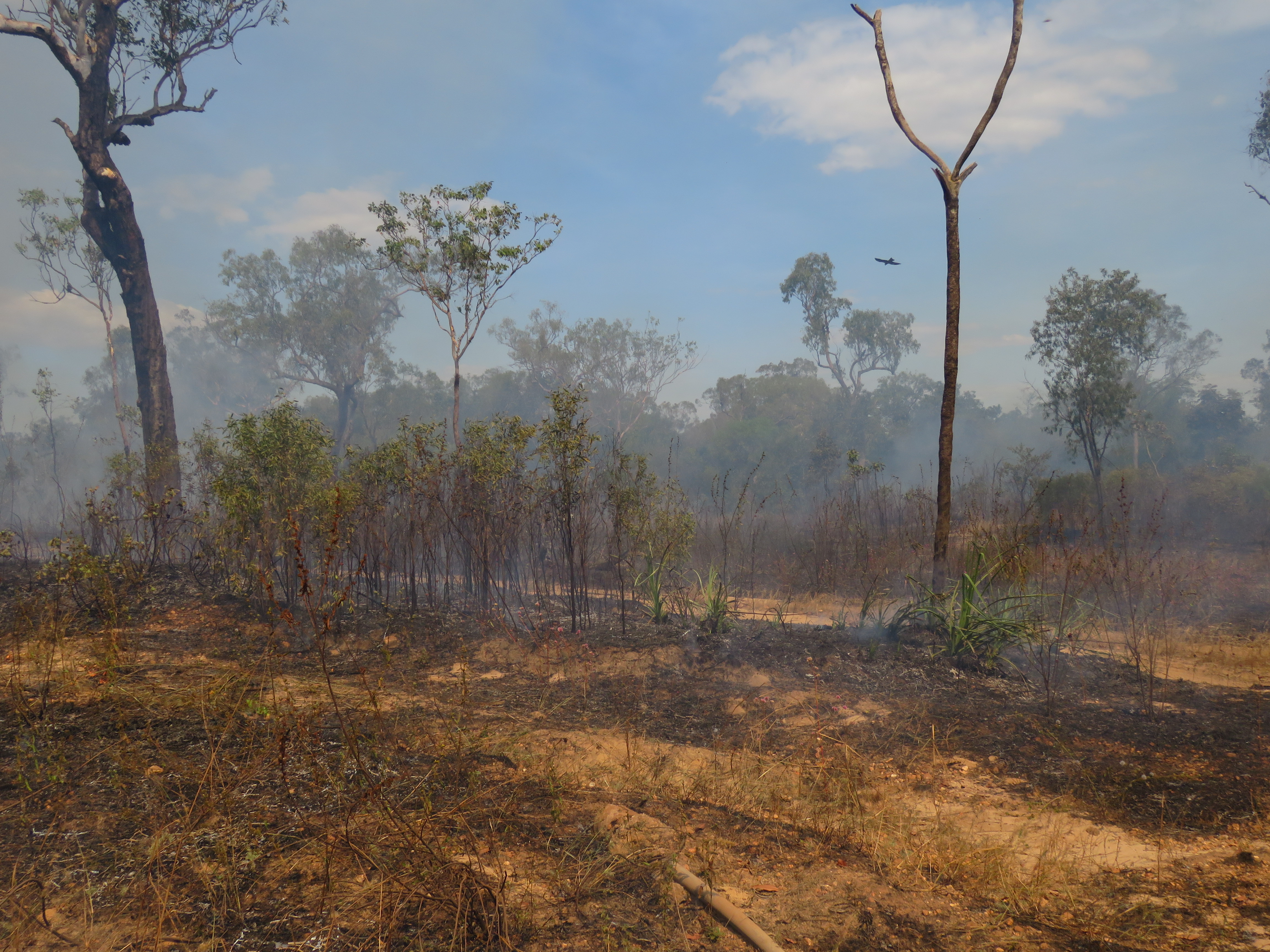This project has, and continues to, improve the methods used to calculate carbon credits for savanna burning projects, leading to reduced greenhouse gas emissions and increased carbon storage.
The credits in turn provide important income for remote Indigenous communities and more incentives for fire management across the north.
Scientists and Traditional Owners have worked together for more than a decade to understand how to best calculate changes in greenhouse gas emissions and carbon storage in savanna landscapes due to changes in fire management. The first savanna burning method calculated the carbon credits earned from fire management that reduced the amount of greenhouse gas which would otherwise have been emitted as smoke when an unmanaged fire burnt through.

The progression of methodology to quantify carbon credits in savanna landscapes.
NESP Northern Hub research has contributed to revising this method which now allows projects to claim both reductions in greenhouse gas emissions and increased amounts of carbon stored in dead wood on the ground, providing further incentives for appropriate fire management through earning more credits.
A senior staff member at the Department of Climate Change, Energy, the Environment and Water said that this work by project leader Garry Cook (CSIRO) in advancing the science of fire management and carbon accounting “has provided an opportunity for science to be directly translated into policy.”
These methods will make an important contribution to reducing Australia’s greenhouse gas emissions and meeting our international climate change targets. They will also provide many social, cultural, economic and environmental benefits.
– Senior staff member, Department of Climate Change, Energy, the Environment and Water
More recently Hub research identified an even larger, previously undocumented, store of carbon in the landscape – each year, more than 2% of the 3.6 billion tonnes of trees across northern savannas die from various causes, creating stores of carbon in dead standing trees – unless they burn. This carbon, and how to track it, has also been newly quantified by the project.
Each year, more than 2% of the 3.6 billion tonnes of trees across northern savannas die from various causes – creating stores of carbon in dead standing trees.

Cool Top End burn. Photo by Jane Thomas.
Again, feedback from government policy-makers has been very positive, for example:
Garry listens to what we want and tailors his scientific interests to work with what the Department wants, and that’s really helpful. Garry works with us to design research and it leads to practical real-world impacts.
– Research user, February 2019.
The new method must be shown to be robust through peer review but, if approved and implemented by government, it may double the amount of abatement a project can create and increase the credits five-fold, without any new changes in fire management if appropriate burning regimes are in place. This will further incentivise emissions reductions and carbon storage across northern Australia, adding to the 6.5 million tonnes of greenhouse gases that have already been abated and are helping to meet international commitments.
As well as contributing to climate change action, these carbon credits contribute to Indigenous employment and wellbeing – at least $72 million has flowed into economies across the north from credits. As an example, Arnhem Land Fire Abatement, just one of many Indigenous owned carbon businesses representing Traditional Owners, distributed $10 million to nine ranger groups in 2017. Such funding is especially valuable in remote northern Australia where there aren’t many other opportunities to generate income.
In contributing to local, national and global benefits, this research brings new meaning to the term ‘dead wood’.
Research outputs
Factsheets
Videos & presentations
Project webpage
Attributions
